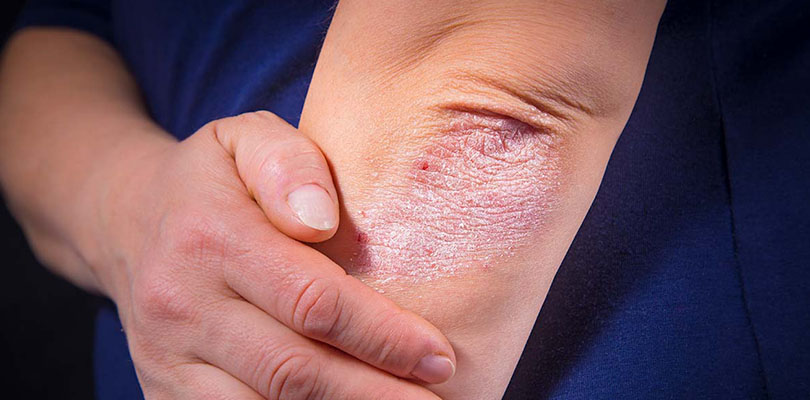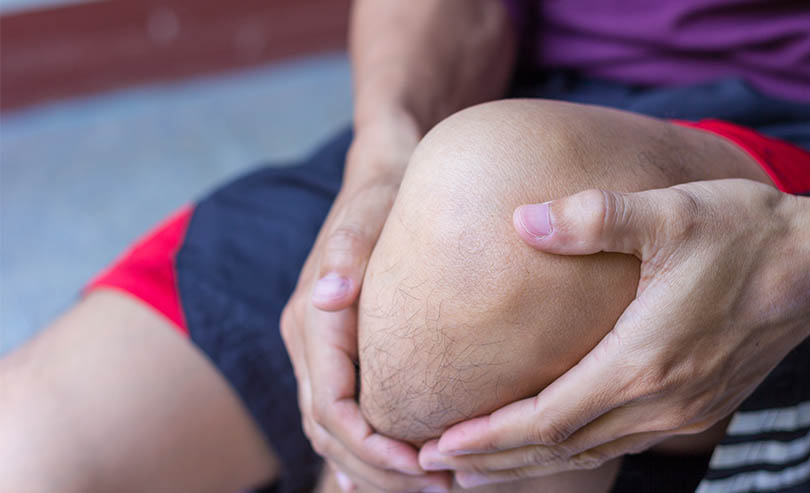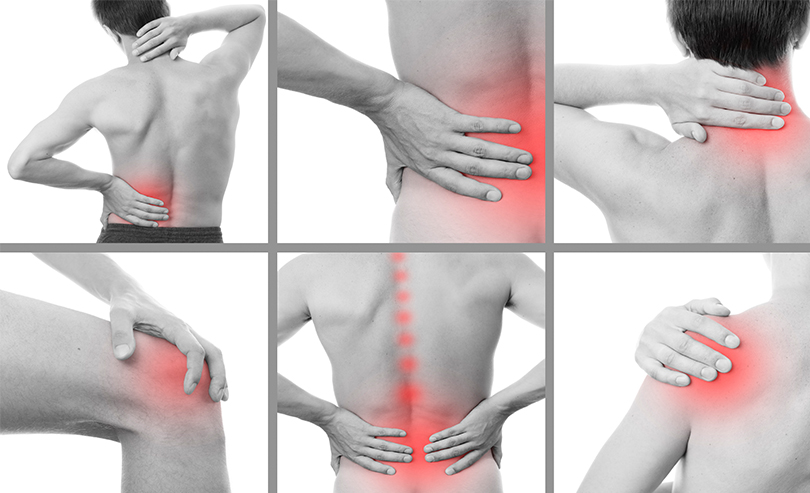Psoriatic Arthritis Symptoms
Psoriatic arthritis is a form of arthritis which often affects people with the skin condition psoriasis. It is unclear exactly what causes psoriatic arthritis, but it is thought that, like psoriasis, it is an autoimmune disorder. Autoimmune disorders occur when the immune system fails to recognize healthy tissues and begins to attack them.
Psoriatic arthritis is a chronic condition which gets progressively worse over time. It may eventually lead to permanent joint damage, resulting in deformity and disability. The best way to avoid this is by getting an early diagnosis and the right psoriatic arthritis treatment to slow the course of the disease.
Let’s take a look at how to recognize the symptoms of psoriatic arthritis, and what you can do to help.
1. Skin Rashes
Most people who develop psoriatic arthritis already have the skin condition psoriasis. In this condition, new skin cells form more quickly than they can be shed causing raised, red patches on the skin. Some people will develop psoriatic arthritis symptoms before getting the psoriasis rash, but this is very unusual.
The most common treatments for psoriasis are topical creams which can be prescribed by your doctor. Some people also find that these symptoms improve with exposure to the sun or other ultraviolet light.
2. Joint Swelling, Stiffness, and Pain
The main symptom of psoriatic arthritis is inflammation of the joints, which causes swelling, stiffness, and pain.
Your joints are protected by a membrane known as the synovium. This produces synovial fluid which lubricates the joints, stopping them from grinding together as they move. When this membrane becomes inflamed, it produces excess synovial fluid, causing the joints to become swollen, stiff, and uncomfortable.
Any of the joints can be affected by psoriatic arthritis, but the most common are the joints of the fingers, toes, elbows, knees, and spine. Some people only have inflammation in one or two joints, but other people can have multiple joints affected.
Most people with psoriatic arthritis find that they are stiffer first thing in the morning and that their symptoms improve with exercise. Therefore, staying active is one of the best ways to relieve joint pain and inflammation due to psoriatic arthritis. Anti-inflammatory drugs and painkillers may also help.
3. Swollen Fingers or Toes
The joints at the ends of the fingers and toes are often affected by psoriatic arthritis. This can cause them to become stiff, swollen, and sausage-like. This condition is called dactylitis, and it can be managed with anti-inflammatory medication.
4. Heel Pain
Psoriatic arthritis can also cause inflammation of the area where a tendon attaches to a bone. This symptom is known as enthesitis. The tendon most commonly affected by enthesitis is the Achilles tendon, causing pain in the ankle and heel. However, other tendons such as those in the elbows may also be affected.
Osteoarthritis (OA) is one of the most prevalent conditions in people over the age of 50, but it can go on without a trace for quite a while.
5. Nail Changes
People with psoriasis may experience nail changes, and these are especially common in psoriatic arthritis. The nails may become pitted, rough, and rigid, or may begin to change color. In some cases, the nail can come away from the skin underneath, increasing the risk of infections.
If you experience nail changes as a result of psoriasis or psoriatic arthritis, keep your nails short, and protect them with gloves if you are doing any manual work. Visit a podiatrist regularly to take care of your toenails, and be cautious with manicuring to avoid damage and infections.
6. Eye Problems
People with psoriatic arthritis may be prone to eye problems such as uveitis (inflammation of the front of the eye) or conjunctivitis (inflammation of the tissue surrounding the eye). These conditions can cause symptoms such as redness, pain, and visual disturbances.
If left untreated, these eye problems could lead to permanent eye damage, so if you get any of these symptoms, see your physician immediately.
7. Fatigue
Many people with psoriatic arthritis find that they get tired easily or feel fatigued much of the time. This is due to the nature of the disease and may be exacerbated by poor sleep due to pain. People with psoriatic arthritis may also suffer from problems like depression, which can also contribute to feelings of exhaustion and fatigue.
The best way to combat fatigue is by ensuring that you get enough rest. Discuss your condition with your family and employer so that they can offer help and support in your daily life. Making sure you get enough sleep and eating a healthy, balanced diet may also help.
8. Symptoms That Come and Go
Like many autoimmune disorders, psoriasis and psoriatic arthritis symptoms can follow a relapsing-remitting pattern. This means that your psoriatic arthritis symptoms may go away for a while but then flare up again at a later date.
Try to avoid triggers such as injuries, and keep your stress levels under control. You could also ask your doctor about biological drugs, a class of drugs which is designed to slow the course of certain autoimmune disorders including psoriatic arthritis.







